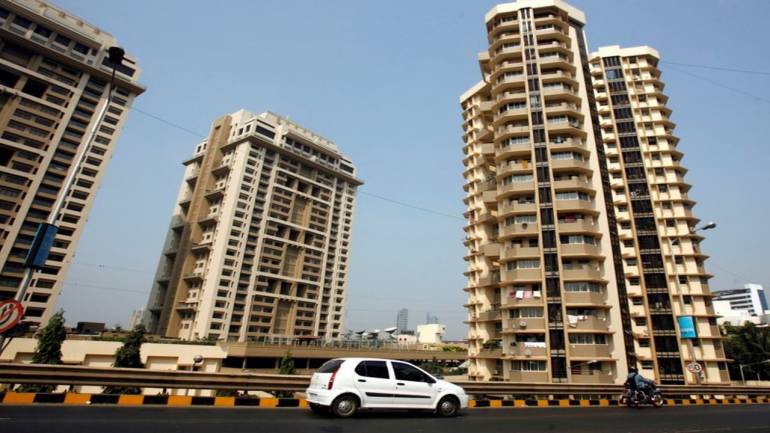

Manali Bhatia
Real estate sector have been going through a consolidation phase. Past years have been very difficult for this sector and such situation was not observed in last three-four decades.
The sector remained under performer because of slowdown in demand and piling up of inventories. Resultant, companies are forced to sell assets owing to hovering debt burden (in lieu of payment of interest cost) despite tumbled down property rates.
Though, in some cities property rates has been increased marginally, but overall growth is still stagnant. We do not see recovery in near term, neither in the next two-three years span.
But yes, due to liquidity crunch many developers have already run out from the queue, and many of them are in line. As of date, they were forced to shut down businesses and probably number is expected to go up by 50-60 percent in next couple of years.
Remaining big brands like Godrej Properties and Oberoi Realty etc. could emerge as one of the good players on account of their quality, commitment & delivery unlike other developers who either delayed projects or became bankrupt.
Knowingly, the pain in real estate started in late 2016, when Demonetisation came through, followed by RERA, Benami Transaction (Prohibition) Act 2017 and introduction of GST (12 percent for real estate) in 2017 that pulled out the wealth in this sector.
Well, the problem did not end up here. Liquidity crisis in NBFC’s has slapped this sector badly. Though government has pushed this sector and is now thriving best to spur demand.
In March, has reduced the GST rates for residential under-construction property from 12 percent to 5 percent and for affordable housing from 8 percent to 1 percent (without Input Tax Credit); In the budget too, an additional deduction of Rs 1.5 lakh on interest paid on loans for affordable housing (for buyers) priced up to Rs 45 lakhs.
Lately, RBI has cut down the benchmark repo rate by 35 bps to 5.40 percent, fourth rate cut in a row to boost housing demand percent a breather for developers. But this did not cheer the sector as expected. The difficulties faced still do not seem to disappear soon in another couple of years.
The major reasons for demand slowdown and what should be the long term strategy?
Low ROI: Prior, one of the major reasons to own an additional property was merely for “Investment purpose”, treated as an asset which aided greater ROI in comparison to equities, gold, debt etc. People used surplus cash as investment in property as it did not need disclosures and saved lower stamp duty which is now difficult.
Immediately after demonetization, benami properties Act etc and last year liquidity crunch hurt buyers sentiments and they step aside from entering into purchases- as higher risk, increased expenses started coming along rather than higher return.
It has to be noted that still 2.17 lakh units inventory is unsold. Thus, due to all this negatives, demand exited and real estate dumped. Presently, most of the demand comes from the user side instead of investor side. Therefore now, only needed property is purchased.
Low Rental & high maintenance: To rent a property/give on lease was the biggest purpose for which investment in property was done. Like we say “Save now for healthier retirement”. Similar is the case when investment in property was done to earn “other income” (here as rent), so that it generates a sizeable amount of return and yield. Whereas, now maintenance cost is increasing and yield going down.
Notably, with Governments affordable housing for all by 2022, the demand for rented properties would shrink & contribute to down scaling of the sector.
Lower fertility in tier 1 and tier 2 cities: Single child birth has been very trendy nowadays. In the urban areas, parents are now restricting to further increase their family from one, in some cases two unlike in previous years where multiple properties for multiple children remained the need of the hour. Going forward, this is expected to keep the demand stagnant for purchasing multiple properties.
What should be the strategy?
In fact, Midsize and Small size reality companies are shattered. Thus, the leftover companies would be one who delivers quality, commitment & healthy cash in books. To shape up, we foresee these companies survival in long run, which are not only trustworthy but clearly an investing idea.
As rightly said that the winner of the war is the king, similarly only companies to survive this torture would be real rare diamonds & king in their field. Thus, in Real estate sector, winner of the war is “survival of the fittest” and in listed space Oberoi Realty, Godrej Properties and Piramal Enterprises are some of them. Hence, we recommend to accumulate these stocks.
Disclaimer: The views and investment tips expressed by investment expert on moneycontrol.com are his own and not that of the website or its management. Moneycontrol.com advises users to check with certified experts before taking any investment decisions.
[“source=moneycontrol”]




